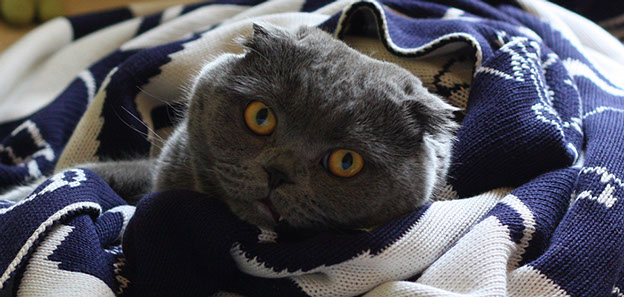Cold winter weather can be very dangerous to humans and pets alike if they are exposed to it for long periods of time. In fact, even though their coats may seem warm, when dogs and cats are exposed to the cold for too long their body temperature can drastically drop, leading to hypothermia. In addition to prolonged exposure to the cold, hypothermia can occur as the result of wet fur and skin, lengthy submersion in cold water, shock and anesthesia.
What are some signs of hypothermia?
Symptoms to watch out for include:
• violent shivering
• lethargy or slowness
• paleness
• weak pulse
• stiff muscles
• breathing problems
• loss of appetite
• temperature below 98°F (average normal body temperature is usually between 101°F and
102.5°F)
• frostbite
• coma
• heart failure
What do I do if I suspect my pet has hypothermia?
If you think your animal may be showing signs of hypothermia it is important to contact your veterinarian immediately. In addition:
• Wrap your pet in a warm blanket or coat or place a warm, towel-wrapped water bottle
against your pet’s abdomen, armpits or chest, then wrap him or her in a blanket. Please
note: Do not use the water bottle unwrapped, hair dryers, heating pads or electric
blankets to warm up a hypothermic pet. This can burn your pet’s skin or cause surface
blood vessels to dilate, which may compromise circulation to vital organs.
• Bring the animal into a warm room
• Provide warm fluids to drink
• Boost your pet’s energy by giving him or her a solution of four teaspoons honey or sugar
dissolved in warm water to drink. If your pet is too weak to drink put 1-2 teaspoons of
corn syrup on the gums
The best way to manage hypothermia is to avoid it. Hypothermia can be prevented by avoiding prolonged exposure to cold temperatures and providing warm, dry shelter for your pets when they are outdoors. As well, pet clothes, boots, and other accessories can help animals with thin fur to keep warm. Very young and old animals, those with low body fat, thyroid gland problems and those that are under anesthesia are particularly at risk of hypothermia. It is important to keep a close eye on these animals and to take all step necessary to prevent hypothermia.
Image by leasqueaky



